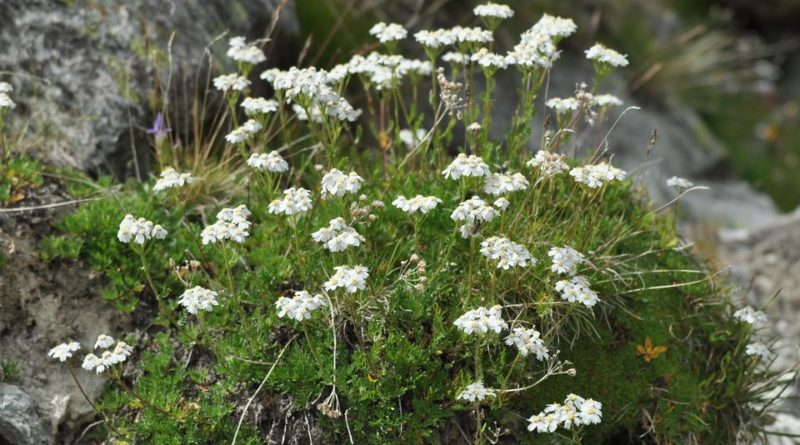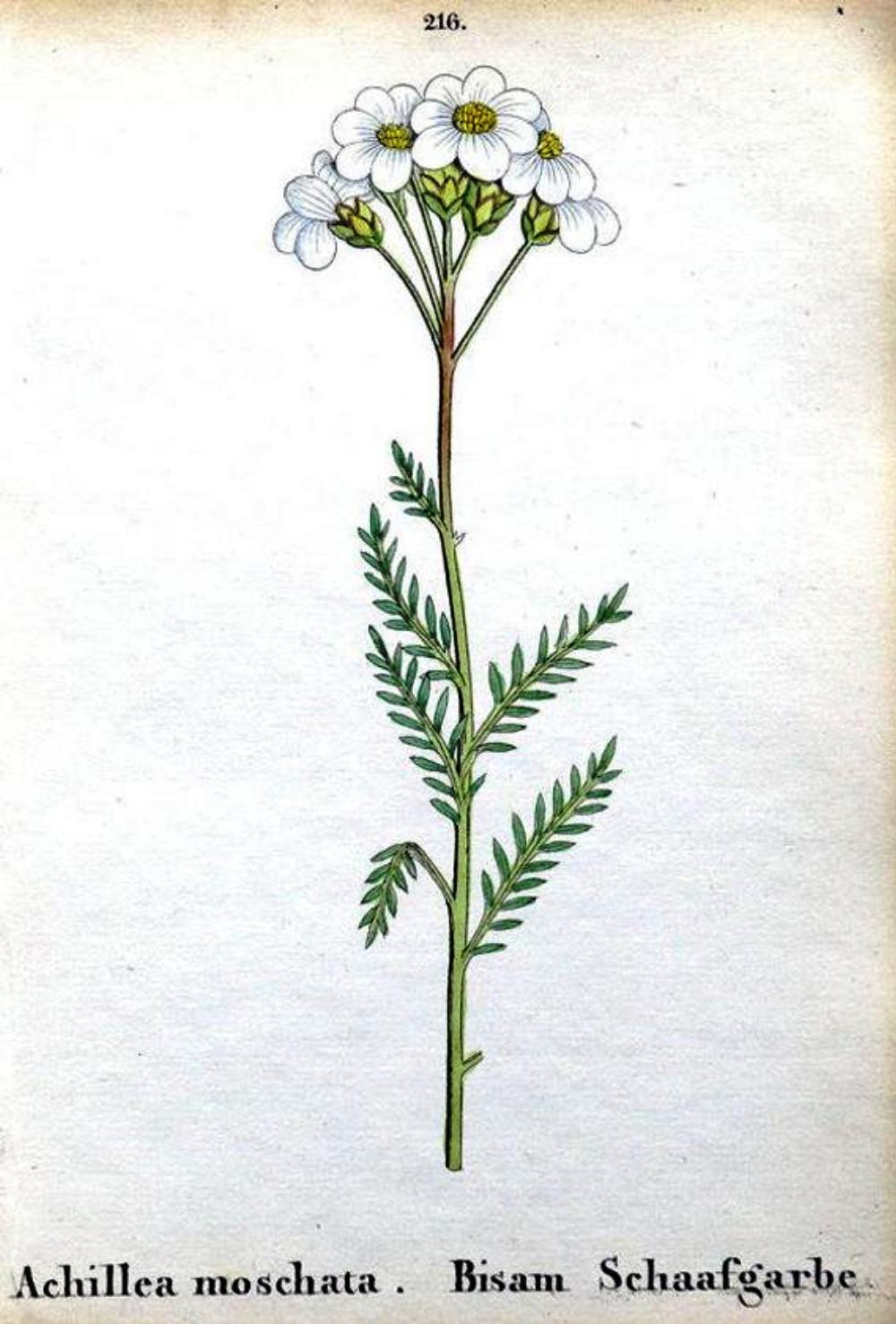Achillea herba-rotta subsp. moschata
Achillea herba-rotta subsp. moschata
The Musky Ilva (Achillea herba-rotta subsp. moschata (Wulfen) I. Richardson) is a herbaceous species belonging to the Asteraceae family.
Systematic –
From a systematic point of view, it belongs to the Eukaryota Domain, the Plantae Kingdom, the Magnoliophyta Division, the Magnoliopsida Class, the Asterales Order, the Asteraceae Family, the Asteroideae Subfamily, the Anthemideae Tribe, the Achilleinae Sub-tribe and therefore to the Achillea Genus, the Grass-broken Achillea Species and the Achillea Erba Subspecies -moschata route.
The terms are synonymous:
– Achillea moschata Wulfen;
– Ptarmica moschata (Wulfen) DC ..
Etymology –
The term Achillea of the genus was dedicated to Achilles (in Greek Aχιλλειοϛ Achilleios), mythical Greek hero who would have used some species of this genus to heal the wounds suffered in battle by his soldiers; a very ancient remedy so that this is one of the medicinal herbs found in an Iraqi necropolis of the Neanderthal man dating back to 60,000 years ago. The name Achillea was already present in the De simplicium medicamentorum facultatibus of the Greek physician Galen (129-200 AD).
The specific herba-rotta epithet comes herba grass and rota wheel: round grass like a wheel: for the round inflorescence.
Finally, the term moschata of the sub species comes from musk, from the Arabic musk musk, a ruminant with a scent gland, therefore that which smells of musk, fragrant in a broad sense.
Geographical Distribution and Habitat –
The Musky Ilva is an endemic plant in the Alps where it is present along the whole chain, particularly in France, Italy, Switzerland and Austria, at an altitude ranging from 1400 to over 3000 meters.
Its habitat is that of poorly calcareous soils and sunny areas where it resists temperatures below even -23 ° C.
Description –
The Achillea herba-rotta subsp. moschata is a perennial plant with dimensions of 10-20 cm and with the presence of secondary roots starting from the stem.
The hypogean stem is woody and creeping, partly buried, while the epigean stem is woody at the base, with more erect herbaceous stems, sub-glabrous with hairs less than 0.1 mm.
The leaves are aromatic, deeply pinnate-matches with a lanceolate outline, with the largest having dimensions of 1 x 5 cm, with winged rachis and acute lacinias, 1-2 mm wide; the basals are embracing.
The flowers are small, tubular, of 2-3 mm and ligulated at the margin with 3-4 mm sub-round white ligules, glandular on the lower page, collected in inflorescences, with flower heads of 4-12 flowers, of 8-14 mm , carried in crushed corymbs composed of about 10 flowers; the envelopes are with sub-hairless scales with a brown margin, scarioso and notched at the apex.
Flowering occurs from June to September.
The fruits are small achenes.
Cultivation –
The Musky Ilva is a plant that grows spontaneously on the Alpine arc and can be reproduced, starting from seed, in similar climatological conditions and on tendentially siliceous or slightly calcareous soils and in sunny areas.
Uses and Traditions –
The Musky Ilva is also known in Italy by the names of taneda or vat grass.
It is a plant that has the property of stimulating the secretion of gastric juices and therefore promoting digestion.
The parts used are both flowers and leaves that can be used directly or by extraction of essential oils.
In fact, this plant has very fragrant flowers that are used like leaves in the preparation of bitters, digestive infusions and liqueurs.
Preparation method –
Musky Ilva has an interesting use both in the kitchen and in the food industry for the preparation of bitters, digestive infusions and liqueurs that are prepared from leaves, flowers or using the essential oils extracted from it.
Guido Bissanti
Sources
– Acta Plantarum – Flora of the Italian Regions.
– Wikipedia, the free encyclopedia.
– Treben M., 2000. Health from the Lord’s Pharmacy, Tips and experiences with medicinal herbs, Ennsthaler Editore
– Pignatti S., 1982. Flora of Italy, Edagricole, Bologna.
– Conti F., Abbate G., Alessandrini A., Blasi C. (edited by), 2005. An annotated checklist of the Italian vascular flora, Palombi Editore.
Warning: Pharmaceutical applications and alimurgical uses are indicated for information purposes only, they do not in any way represent a medical prescription; therefore, no responsibility is accepted for their use for healing, aesthetic or food purposes.


